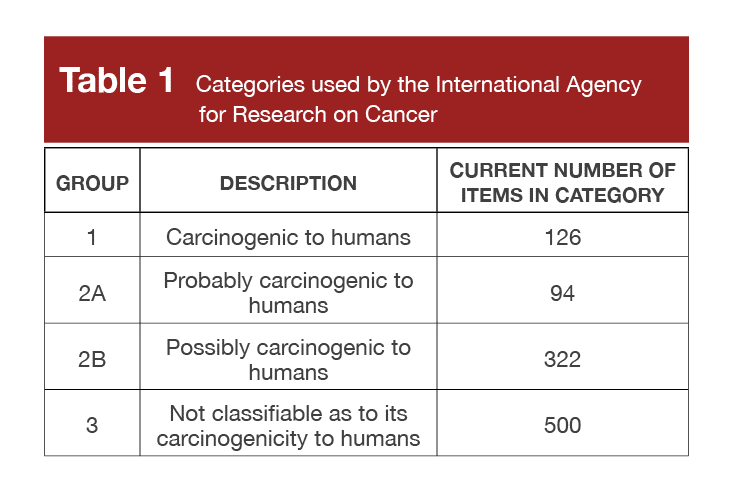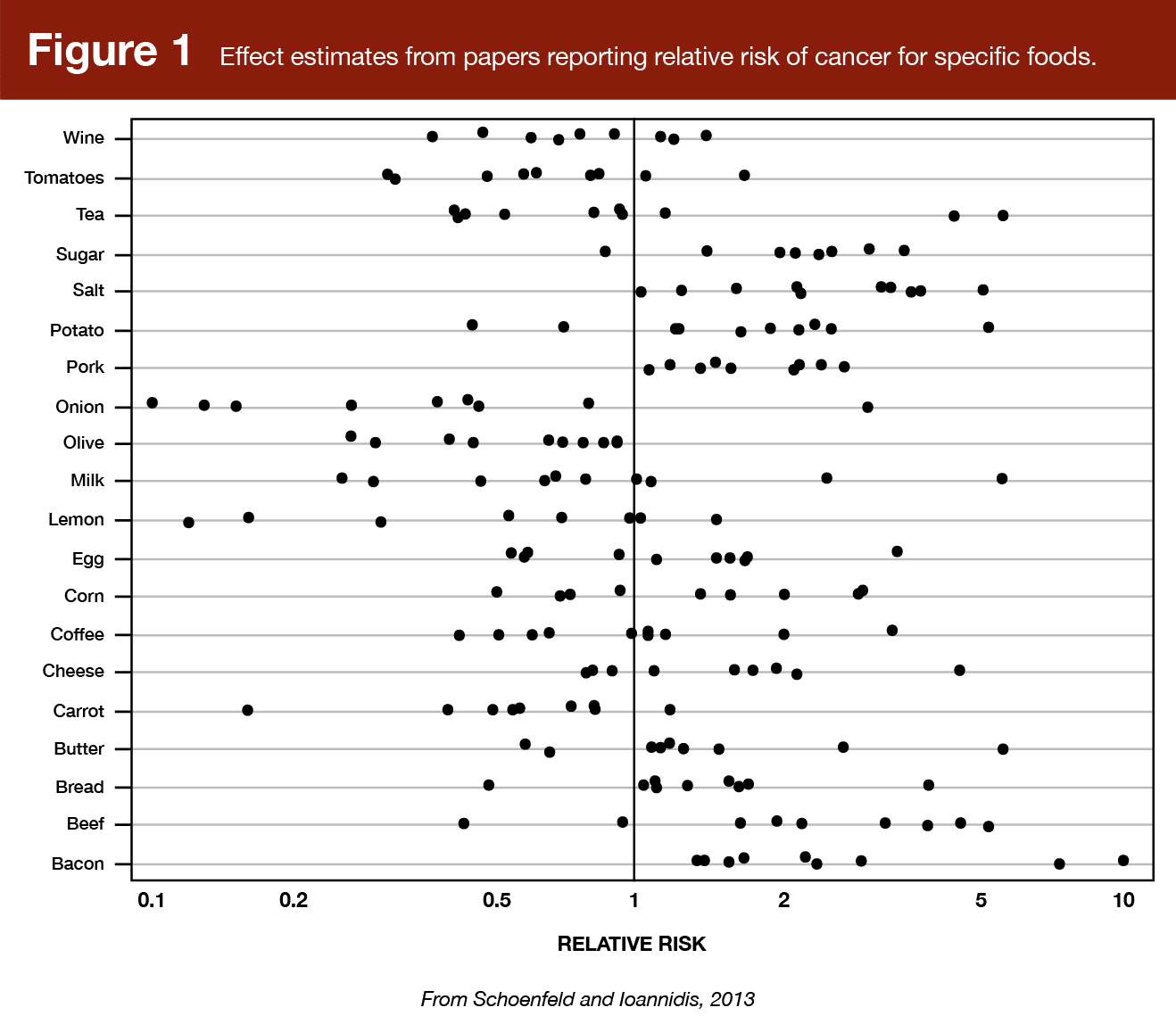Note: This article was the MASS Research Review cover story for August 2023 and is the first installment of a new type of MASS article called “Beyond the Headlines.” The purpose is to concisely address a topic that’s currently dominating headlines or causing some controversy in the fitness space. If you want more content like this, subscribe to MASS.
You’ve likely seen quite a few headlines about aspartame within the last month or so. The International Agency for Research on Cancer recently made some waves by declaring aspartame a “possible carcinogen,” which inspired a flood of news articles about the safety of consuming products containing aspartame. In this article, I’ll provide a quick rundown of what happened, what it means, and how you can make informed decisions about your risk tolerance moving forward.
Who is the International Agency for Research on Cancer?
The International Agency for Research on Cancer is “the specialized cancer agency of the World Health Organization.” Their stated mission is to promote international collaboration in cancer research. The organization was formed in 1965, and was created in response to a French initiative to address the multifaceted burdens associated with increasing cancer prevalence. Their website indicates that there are now 27 member countries, and that the organization “has conducted research worldwide and helped thousands of cancer researchers from developing countries hone their skills through fellowships, courses, and collaborative projects” over the last five decades.
In line with its mission, the International Agency for Research on Cancer maintains a list of carcinogenic classifications. They evaluate a number of “items,” which can range from food or beverage ingredients to environmental or occupational exposures. These items are placed into one of four hazard categories, as listed in Table 1.

Of course, it’s important to understand what these categories literally represent, as the details matter when using this information to guide health-related decisions. The categories can be interpreted as follows:
- Group 1: There is enough evidence to conclude that it can cause cancer in humans.
- Group 2A: There is strong evidence that it can cause cancer in humans, but at present it is not conclusive.
- Group 2B: There is some evidence that it can cause cancer in humans but at present it is far from conclusive.
- Group 3: There is no evidence at present that it causes cancer in humans.
What category is aspartame in?
The reason this list of carcinogens is all over the news is because the International Agency for Research on Cancer recently assigned aspartame to group 2B, which is “possibly carcinogenic to humans.” As noted above, this reflects the organization’s perspective that there is some evidence hinting at carcinogenicity in humans, but the evidence is far from conclusive. According to the website of the Occupational Safety and Health Administration in the US Department of Labor, “this category is used for agents for which there is limited evidence of carcinogenicity in humans and less than sufficient evidence of carcinogenicity in experimental animals. It may also be used when there is inadequate evidence of carcinogenicity in humans but there is sufficient evidence of carcinogenicity in experimental animals. In some instances, an agent for which there is inadequate evidence of carcinogenicity in humans and less than sufficient evidence of carcinogenicity in experimental animals together with supporting evidence from mechanistic and other relevant data may be placed in this group. An agent may be classified in this category solely on the basis of strong evidence from mechanistic and other relevant data.”
What else is in this category?
It is inherently difficult to translate categorical hazard designations into actual health-related decisions. In this particular scenario, one strategy to help calibrate your expectations is to explore the other items that find themselves in Group 2B (possibly carcinogenic). This is a rough, non-scientific way of comparing this “new” perception of aspartame risk to other things you encounter on a regular basis. You might really stress over these exposures, or you might not worry about them at all, and that can be helpful in guiding your relative panic level about aspartame.
Some other items in the “possibly carcinogenic” group include progestins (used in some contraceptives), engine exhaust, kava extract, ginkgo biloba extract, aloe vera extract, and caffeic acid (found in coffee, wine, thyme, sage, spearmint, Ceylon cinnamon, apple sauce, apricots, prunes, barley, rye, and yerba mate). In contrast, several common exposures find their place in category 2A, which is “probably” carcinogenic (that is, a higher level of carcinogenic potential). These include eating red meat, working the night shift, drinking hot beverages (above 65 degrees Celsius), anabolic steroids, indoor fireplace emissions, emissions from high-temperature frying, and working as a hairdresser. If we move up yet another category of carcinogenic potential, alcoholic beverages, solar radiation, processed meat, wood dust, and air pollution find themselves squarely in category 1 (carcinogenic to humans).
Knee-jerk reactions
Based on internet chatter, it seems like a lot of people jumped straight to an extremely understandable knee-jerk reaction: “I don’t want cancer, and aspartame is a carcinogen now, so I will try to avoid all aspartame moving forward.” I don’t fault anyone for applying that logic, and no one is going to suffer direct adverse effects from not consuming aspartame. However, this logic gets tricky if we apply it to other elements in the same hazard category as aspartame – I’ve never met anyone adamant about avoiding all foods and beverages containing caffeic acid (I only provided a tiny fraction of the full list), as it would be quite difficult to do. The same is true when we go up to group 2A, which includes things like red meat, indoor fireplace emissions, or very hot beverages. I’ve never seen someone treat red meat like a pure poison based on this list from the International Agency for Research on Cancer, nor have I heard of anyone boarding up their fireplace or buying a thermometer to test their coffee or tea temperature each morning. Even if we consider the highest category for carcinogens (group 1), I know plenty of folks who readily consume alcohol on a regular basis, despite the fairly common knowledge that it is associated with increased risk of cancer and other medical conditions.
To be clear, the point of the previous paragraph was not to use “whataboutism” as a superficial argument to minimize perceived risks associated with aspartame consumption. It was merely to recalibrate our mental starting point as we dig into a more nuanced interpretation – if we are worried about aspartame merely for being placed in category 2B, we should understand the types of fairly mundane things that fall into similar (and higher) hazard categories so we can anchor our panic level accordingly.
Digging deeper
Concerns about links between aspartame and cancer are not new. They spiked in response to a series of rodent studies completed at the Ramazzini Institute, with the first results published in 2006 (1) and 2007 (2). In the years since, the scientific community has broadly concluded that these findings are unreliable, but concerns persist. Mechanistically, the metabolism of aspartame can yield a small amount of formaldehyde (3), a known (group 1) carcinogen. There are also some mechanistic papers linking aspartame to physiological effects associated with carcinogenesis (such as oxidative stress, chronic inflammation, angiogenesis, and genotoxicity), and some isolated observational findings linking aspartame to certain forms of cancer (4). This combination of rodent data, mechanistic data, and epidemiological data provides the perfect substrate for a simmering, persistent level of concern about aspartame and cancer risk. So, to contextualize the impact of this classification, I want to highlight a few key points.
First, being placed into group 2B isn’t a particularly big deal. For example, this article by the American Cancer Society lists known carcinogens (group 1) and probable carcinogens (group 2A), as determined by two different organizations. They don’t even bother to list the items in group 2B, because the evidence for these items simply isn’t strong enough.
Second, you interact with carcinogens in the same hazard category, and even higher hazard categories, on a regular basis. Solar radiation, air pollution, wood dust, caffeic acid, the occasional glass of wine or sausage link… you get the idea. Artificial sweeteners tend to get disproportionately large reactions when they show up in health-related headlines, and I suspect that a large chunk of that interest relates to the “artificial” part of the name. Plenty of folks fall prey to the “appeal to nature” logical fallacy, and assume that “artificial chemicals” must be bad for us. Next up is point number three, which is possibly the most important: this list of carcinogens refers to carcinogenic potential, not the likelihood that typical levels of exposure will cause cancer.
Ultimately, this comes down to the difference between hazard and risk; to quote the European Food Information Council, “A hazard is something that has the potential to cause harm while risk is the likelihood of harm taking place, based on exposure to that hazard.” This list of carcinogen categories pertains exclusively to the concept of hazard rather than risk. As the American Cancer Society puts it, these categories “describe the level of evidence that something can cause cancer, not how likely it is that something will cause cancer in any person (or how much it might raise your risk).” Within a particular group, there are very different risk levels – for example, smoking confers greater cancer risk than processed meat. In addition, this list makes no attempt to identify safe levels of exposure. Solar radiation can cause cancer, but that doesn’t mean you should avoid the sun at all costs. X-ray radiation can cause cancer, but that doesn’t mean we should entirely stop using x-ray imaging in the medical field.
For my fourth and final key point, I want to refer to a recent report (published in 2022) on non-nutritive sweeteners by the World Health Organization (WHO). I’m not name-dropping them purely to imply credibility, but because the International Agency for Research on Cancer is actually part of the WHO. While this report is not explicitly restricted to aspartame studies, aspartame is by far the most-studied non-nutritive sweetener, and therefore contributing the lion’s share of the data analyzed. Their report includes meta-analyses for cancer mortality and cancer incidence in humans, in addition to a huge table summarizing findings for specific forms of cancer. The hazard ratio for both mortality and incidence was 1.02, which is about as close to zero effect as you’re going to get (check out this link if you’d like a detailed explanation and comparison of hazard ratios, odds ratios, and risk ratios). When it comes to specific forms of cancer, the researchers found statistically significant increases in cancer outcomes (quantified as hazard ratios, odds ratios, or risk ratios, depending on the outcome) for bladder cancer, larynx cancer, and “cancers not related to obesity,” but significant reductions for lung cancer and ovarian cancer. The bladder cancer findings are most likely attributable to saccharin rather than aspartame, and the other significant findings are for cancers with very limited data available (so those findings should be treated as inconclusive). For the other types and categories of cancer in the summary table (about 20 or so), the effects of non-nutritive sweeteners were non-significant. I don’t want to take a huge detour here, but if you think I’m being too flippant about looking past isolated findings of altered cancer risk, I’ll merely refer you to Figure 1, which comes from a pretty famous paper (5) demonstrating that just about everything we eat appears to both cause and prevent cancer if you’re willing to take all isolated findings at face value.

Other recent systematic reviews focusing exclusively on aspartame report similar conclusions. For example, a 2023 paper by Borghoff and colleagues (6) set out to specifically focus on potential links between aspartame and cancer risk in their systematic review, with a thorough approach that considered a combination of animal studies, epidemiological studies, and over 1300 mechanistic endpoints. After an extensive review of the best available evidence, they concluded as follows: “Taken together, available evidence supports that aspartame consumption is not carcinogenic in humans and that the inconsistent findings of the [Ramazzini Institute] studies may be explained by flaws in study design and conduct (despite additional analyses to address study limitations), as acknowledged by authoritative bodies.”
So, we’ve got two different questions with two different answers here. Based on all available data (including mechanistic research and rodent research), is it possible (not certain or probable) that aspartame might be carcinogenic at some dosage? Yes. Do we have sufficient evidence to be alarmed about the carcinogenic potential of aspartame at doses that are actually consumed by humans? So far, no.
Practical application
It’s important to remember what really happened here. The International Agency for Research on Cancer, which is affiliated with the World Health Organization, categorized aspartame as a “possible carcinogen” after an updated review of the evidence. While this sounds pretty jarring on the surface, we interact with many possible, probable, and known carcinogens on a regular basis. Their conclusion is based on a fairly limited mix of mechanistic, animal, and human research, and the “possible carcinogen” label reflects a low level of certainty. As of 2022, the World Health Organization had set the acceptable daily intake level for aspartame at 40 mg/kg of body mass, which is 2800 mg/day for a 70kg person. As explained by Ahmad et al (3), the acceptable daily intake level is “an estimate of the maximum amount of a food additive in food or beverages (expressed on the basis of body weight) that can be safely consumed on a daily basis over a person’s lifetime without any health risk to the consumer, including a 100-fold safety factor.” You can probably drink a 12-pack of your favorite diet soda before hitting this threshold, and the US Food and Drug Administration set an even higher threshold of 50 mg/kg. Even after the decision to categorize aspartame as a group 2B carcinogen, the Joint Expert Committee on Food Additives (which includes the World Health Organization and the United Nations Food and Agriculture Organization) has not modified or reduced the acceptable daily intake level.
At the end of the day, you don’t need aspartame. If you have very low risk tolerance for potential carcinogens, you can simply err on the side of caution and choose to avoid aspartame. That’s totally fine, and you won’t keel over from an aspartame deficiency. Personally, I’m not particularly worried about aspartame intake – not because I want cancer, but because I haven’t seen compelling evidence pointing to a high risk level in humans. I’ve long been aware that there is some mechanistic research hinting at the possibility of a carcinogenic effect, some very mixed evidence in rodent models, and some very mixed evidence in observational human data. To date, most national and international agencies have not considered the totality of this evidence as concerning enough to warrant bans or warnings, and my perspective is quite similar. With this in mind, I want to reiterate an important quote from before: “this category [2B] is used for agents for which there is limited evidence of carcinogenicity in humans and less than sufficient evidence of carcinogenicity in experimental animals.” In my opinion, this is the correct category for aspartame (based on that part of the description), but not a cause for panic or extreme concern.
Get more articles like this
This article was the cover story for the August 2023 issue of MASS Research Review. If you’d like to read the full, 100-page August issue (and dive into the MASS archives), you can subscribe to MASS here.
Subscribers get a new edition of MASS each month. Each issue includes research review articles, video presentations, and audio summaries. PDF issues are usually around 120 pages long.
References
- Soffritti M, Belpoggi F, Esposti DD, Lambertini L, Tibaldi E, Rigano A. First Experimental Demonstration of the Multipotential Carcinogenic Effects of Aspartame Administered in the Feed to Sprague-Dawley Rats. Environ Health Perspect. 2006 Mar;114(3):379–85.
- Soffritti M, Belpoggi F, Tibaldi E, Esposti DD, Lauriola M. Life-Span Exposure to Low Doses of Aspartame Beginning during Prenatal Life Increases Cancer Effects in Rats. Environ Health Perspect. 2007 Sep;115(9):1293–7.
- Ahmad SY, Friel JK, Mackay DS. Effect Of Sucralose And Aspartame On Glucose Metabolism And Gut Hormones. Nutr Rev. 2020 Sep 1;78(9):725-746.
- Riboli E, Beland FA, Lachenmeier DW, Marques MM, Phillips DH, Schernhammer E, et al. Carcinogenicity of Aspartame, Methyleugenol, and Isoeugenol. Lancet Oncol. 2023 Jul 13:S1470-2045(23)00341-8. Epub ahead of print.
- Schoenfeld JD, Ioannidis JP. Is Everything We Eat Associated With Cancer? A Systematic Cookbook Review. Am J Clin Nutr. 2013 Jan;97(1):127-34.
- Borghoff SJ, Cohen SS, Jiang X, Lea IA, Klaren WD, Chappell GA, et al. Updated Systematic Assessment Of Human, Animal And Mechanistic Evidence Demonstrates Lack Of Human Carcinogenicity With Consumption Of Aspartame. Food Chem Toxicol. 2023 Feb;172:113549.




